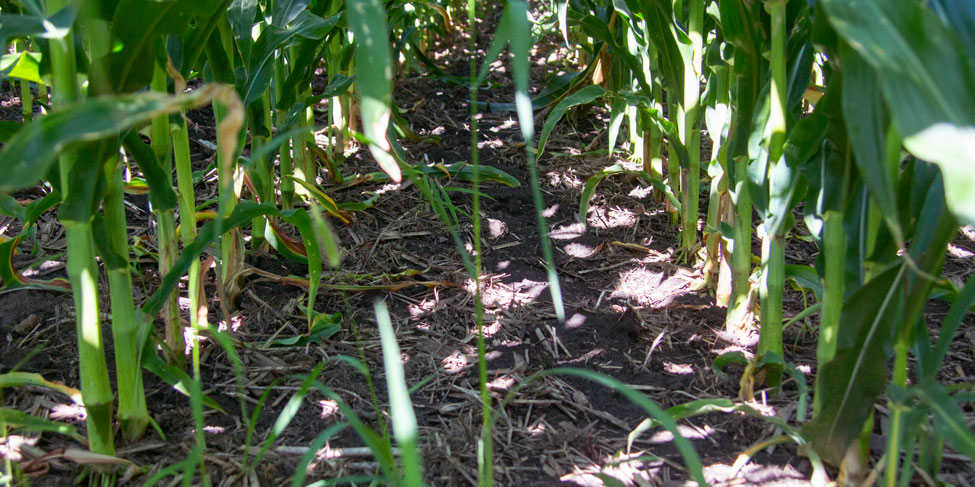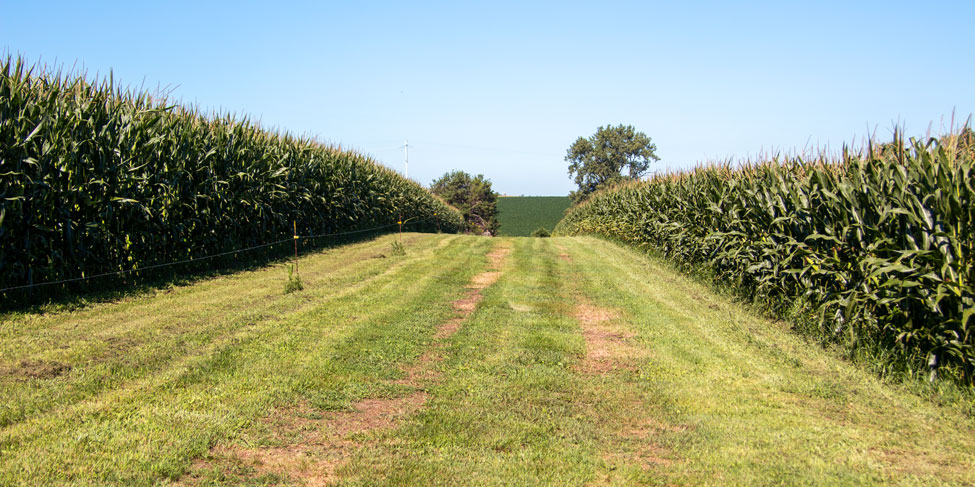Farming for the Future of Water
June 18, 2025
By Chelsea Mumm, Wixted and Company
Cedar Rapids draws its drinking water from a shallow alluvial aquifer adjacent to the Cedar River. It’s been a decade since Cedar Rapids launched water quality improvement work within the Cedar River Watershed, and farmers’ participation in conservation practices has soared.
Starting in 2015, the Middle Cedar Partnership Project worked in the Middle Cedar Watershed upstream of Cedar Rapids to improve water quality and reduce flooding in agricultural areas. Following the receipt of federal and state funding in 2020, the Cedar River Source Water Partnership (CRSWP) was established to build upon the success of the previous five years, expanding its efforts to encompass the entire Cedar River Watershed.
The Cedar River Watershed comprises more than 6,500 square miles from Austin in southern Minnesota to Muscatine in southeastern Iowa. The CRSWP has engaged with farmers, agricultural partners and communities throughout the watershed to implement conservation practices on farmland.
The goals:
• Protect source water on rural farmsteads and private wells within the watershed
• Improve drinking water in downstream communities
• Reduce flood risk downstream
• Improve fish and wildlife habitat
The culprit: Nitrates
Nitrates are a type of fertilizer that helps crops grow. However, rainfall can easily wash nitrates off farmland and into streams and rivers, which then feed our drinking water systems. “We want to make sure we are mindful about land use management practices to mitigate nitrate pollution,” says Mary Beth Stevenson, watersheds and source water program manager for the City of Cedar Rapids.
 Tracking Nitrate Leaching
Tracking Nitrate Leaching
Nitrate levels in the Cedar River are a concern. In May 2024, when a wet season followed a drought, scientists observed spikes in the Cedar River’s nitrate levels. At one point, they measured at 18.2 milligrams per liter, nearly double the national standard of 10 milligrams per liter. Concentrations fell quickly as the rain let up.
The Cedar Rapids Water Pollution Control Division ensures the city’s drinking water is always safe. “We’re tracking nitrate levels in our water supply 24/7,” Stevenson says. “We always know our precise levels and respond to the data by selecting source water wells with lower nitrate concentrations when nitrates are peaking in the Cedar River. This strategy has allowed us to continue delivering clean and safe drinking water during times of high nitrate movement throughout the watershed.”
In the Cedar River Watershed, approximately 73% of the land is used for row crop agriculture. While crop agriculture is not the only contributor to nitrates in Iowa’s waterways, it is the most significant due to its breadth. The CRSWP hopes that by connecting with farmers throughout the watershed, they can address contamination at the source. The program offers farmers cost-sharing opportunities for implementing conservation practices to reduce nitrate leaching from their land.
As of 2024, the program has provided farmers with direct financial assistance to plant cover crops on more than 340,000 acres of farmland. Farmers have also partnered with the program to implement no-till or reduced tillage practices, saturated buffers, bioreactors, wetlands and oxbows. “The farmers we work with don’t want to be part of the problem; they want to be part of the solution,” Stevenson says.
 Finding the Right Conservation Practice
Finding the Right Conservation Practice
There is no one-size-fits-all approach to conservation practices. The CRSWP works with farmers to determine the best practices for their farmland.
Conservation practices include:
Cover crops — which Stevenson calls the “backbone” of conservation practices — help filter out extra nitrates from leaching into tile drainage runoff. The grasses, legumes and forbs provide seasonal vegetative cover, which improves soil health and farming production, reduces erosion, and decreases pollution.
Saturated buffers are underground pipes, attached to the end of a tile line, that run parallel to a ditch or stream. Perforation along the pipes allows water to be released gradually, which gives nitrates time to break down and ensures nitrate levels in waterways do not spike.
Bioreactors are buried trenches of wood chips, also attached to a tile line on a field’s edge. Like saturated buffers, bioreactors provide an opportunity for microbes to break down nitrates gradually.
Wetlands require available land, which is why they are typically implemented in low-yield areas. These shallow vegetated pools help filter nutrients. Wetlands, bioreactors and saturated buffers are commonly referred to as edge-of-field practices.
No-till practices and strip tillage focus on disturbing the soil as little as possible, in turn curbing erosion and reducing excess sediment in surface water.
Prairie strips strategically implement native prairie species within row crops.
 Making Progress, Acre by Acre
Making Progress, Acre by Acre
The CRSWP has partnered with the Iowa Soybean Association (ISA) to scale conservation practices in the Cedar River Watershed. Evan Brehm, ISA conservation agronomist, applauds farmers who were early adopters of conservation practices, but says it’s essential to continually bring new farmers on board. “New adoption is so important,” Brehm says. “But it all takes time because not all operations are the same.”
In addition to improving water quality at the source in the Cedar River Watershed and downstream in Cedar Rapids, conservation practices will help drive the state toward its Iowa Nutrient Reduction Strategy (INRS) goals to reduce nitrate levels in the Mississippi River. The INRS, a statewide strategy launched in 2013 to reduce nutrients in Iowa waters and the Gulf of Mexico, calls for a 45% reduction in nitrate and phosphate runoff into Iowa’s waterways by 2035.
Cover crops have been proven to reduce nitrate leaching from row crops by between 33% and 100%, depending on the type and environment. Not only do cover crops reduce nutrient runoff and improve water quality, but they also improve soil health, water filtration and weed management long term — all of which reduce farmers’ costs year over year.
"Farmers want the freedom to farm and use the products best for growing crops," Brehm says. "They're also seeing that by stabilizing their nutrient resources and reducing runoff, they're keeping the products where they're best used — in the field — while protecting water sources downstream."
In 2009, approximately 10,000 acres of land in Iowa were under conservation practices. As of fall 2024, that has risen to nearly 4 million acres.
“Every acre matters,” Stevenson says.